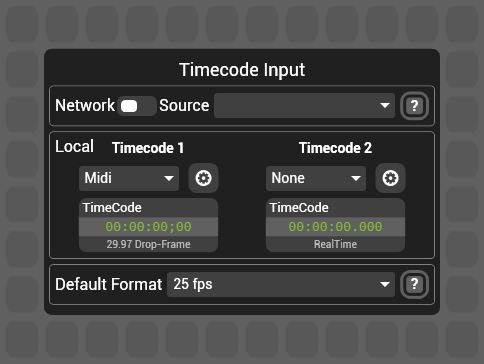Timecode can either be received on the local machine or on a remote one via HippoNet

Time and timecode are distributed by Hippotizer within a single system or between systems over the network.
Network
Sets the timecode and synchronisation sources.
- Disabled The default. The system is the master. Timecode is received on the local system. Sync busses are generated and received on the local system only.
- Enabled The system is a slave to another system. Local timecode controls are disabled. Both Timecode channels and all 16 Sync Bus channels are received from the selected remote source.
There are two common methods for handling timecode in Hippotizer systems:
Receive timecode on every system.
- Send timecode to each system
- Disable network timecode in sync manager
Advantages to this method:
- Offers a robust topology; a single failure will not stop multiple systems from playing back
- Any signal delay will be same for all systems ensuring frame synchronisation
Disadvantages to this method
- Requires more equipment as each system must have identical timecode hardware.
Distribute timecode from a master system.
- Send timecode to one system only — the master.
- Enable network sync on all other systems (the slaves) and set their source to be the master
Advantages to this method:
- Simplifies setup and uses less equipment; only one timecode receiver is required.
Disadvantages to this method
- If a the master system, or it’s timecode hardware were to fail the whole system would stop working
- The delay may not be the same between master and slaves as they have dis-similar signal chains.


Post your comment on this topic.